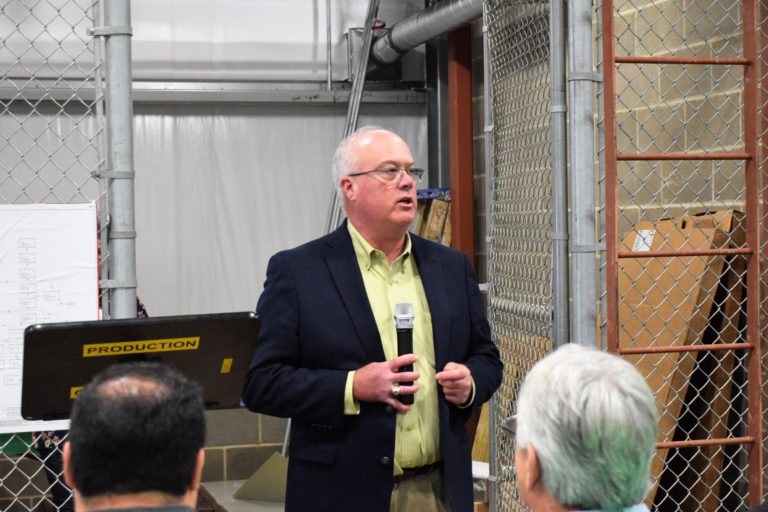Sunday Sitdown

Kathi Calvert
Houston County Electric Co-Op
By Greg Ritchie
Messenger Reporter
The Messenger continues its Sunday Sitdown reports where we speak with our local pastors, educators, businesspeople, students and interesting people of all walks of life in Houston County. To see the full video interview, click on the link below!
What exactly does the HCEC do?
“We deliver energy to businesses and individual consumers throughout parts of nine counties. We operate in the rural areas, not within city limits, typically with Kennard being our one exception. But co-ops were designed years ago because there was no financial incentive for investor owned utilities to build out to the rural members, because it was just too cost prohibitive. Co-ops were a group of members who banded together and created an organization where they serve each other and they contribute proportionally to the financial health of the organization. In turn, they get electric service and any profits that we make are allocated back to our members. So we operate on a nonprofit basis. We need a little margin to operate, but everything we make goes back to our members and we stay local. That’s the other big difference between us and other utilities – we’re 100% local.”
What have been some of your successes?
“One of the biggest things that stands out my mind is not the most recent tornado, but when we had the tornado that went through Alto area, we had a lot of storm damage and we had 1000’s of our members out. It was one of our first really major storms since Hurricane Ike. And once you get through all the disaster and get through safely and get that last member restored, you feel like you’ve conquered the world. I’ve jokingly said it’s equivalent to our Super Bowl – you feel like you did it! The very next day another storm can happen and you do it all again. I was so proud of what we did through major events like that winter storm that we kept our outages rotating, we didn’t leave people we had control over out for extended days, weeks at a time during that whole event. We figured it all out and we keep going and we keep people safe and we get their power back.”
What is the energy outlook as we head into another scorching summer?
“Capacity is more scarce. With the electric system, you have to plan for those peak maximum usage days. And we’ve had a lot of coal base-load generation units retire over the years in every market – not just in our market – other markets, too, which leaves leaner capacity: solar and other wind renewables. They’re great but you can’t call on them and you can’t increase output rapidly. And that spinning reserve is really important. Generally, whether it’s this hot summer or cold days in winter, we’re seeing a lot more scarcity, which means higher energy costs. It’s the simple supply and demand chain, where, the more demand there is, the higher the price will be until you meet reached maximum output and at that point, what we’re designed for is to protect the grid overall. That’s why in a winter storm you go into load-shed events and why it’s happened in other markets. You start shedding load to protect the infrastructure from just cratering because it’s really hard to bring it back up. The very complexity of the new energy environment has changed the way we operate a great deal. We never used to think about if we going to have enough capacity. Running this hard, this early in the summer is tough on this generation units, causing forced outages when things break because they’re running 24/7, ‘all-out’ capacity. It’s a fragile environment. Every day, I think it’s a miracle that we all have electricity to the level we do.”
Greg Ritchie can be reached at [email protected]






